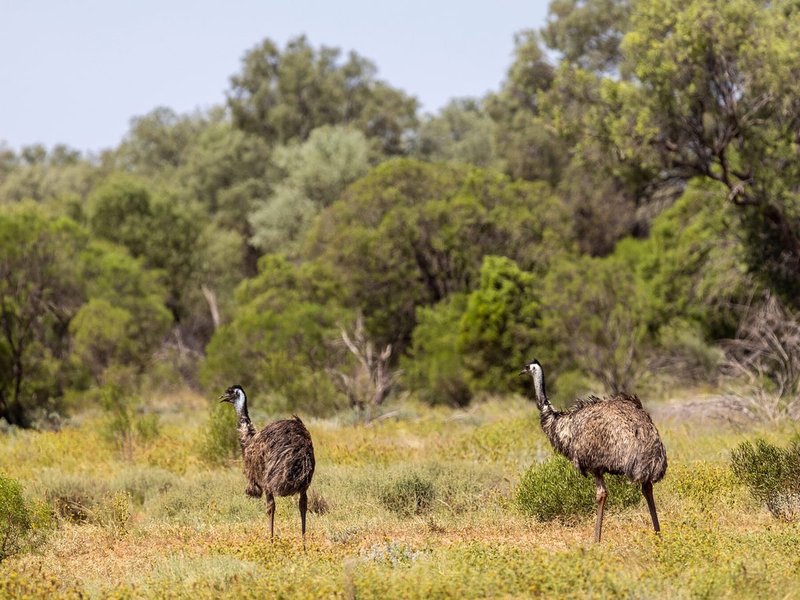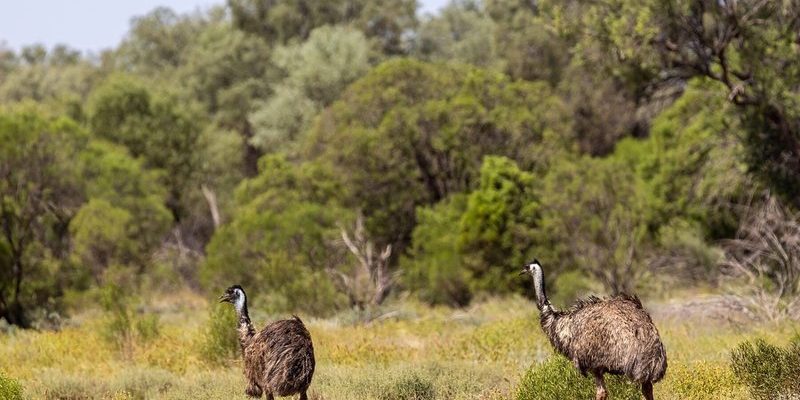
Understanding where emus live isn’t just about geography; it’s also a peek into their behaviors, survival strategies, and interactions with the ecosystem. Their habitats are as diverse as they are, and each offers unique resources and challenges. So, let’s dive in and explore the rich tapestry of emu habitats and distribution across Australia!
Emus’ Natural Habitat: A Closer Look
Emus thrive in various habitats, including savannas, scrublands, and woodlands. They often seek out environments that provide ample food sources and shelter. Here’s a breakdown of their preferred habitats:
- Savannas: These open, grassy areas allow emus to roam freely while foraging for seeds, fruits, and insects.
- Scrublands: Dense, low-growing vegetation offers cover from predators while providing food.
- Woodlands: Areas with scattered trees give them shelter and a variety of food options, like nuts and berries.
You might be wondering how emus adapt to such different environments. These birds are incredibly resilient and can adjust their diet based on what’s available. For instance, in arid regions, they might depend more on seeds and fruits, while in wetter areas, they may find plenty of insects.
The Range of Emus Across Australia
Emus are native to Australia, and their range is quite expansive. You’ll find them throughout most of the continent, except for a few areas. What’s interesting is that their distribution varies widely depending on environmental conditions.
Here’s a quick overview of where emus are typically found:
- Eastern Australia: These emus inhabit forests, grasslands, and agricultural areas, often foraging near farms.
- Western Australia: In this region, emus prefer open woodlands and scrublands, especially during breeding season.
- Central Australia: Emus thrive in arid environments, often roaming in search of food and water.
Their ability to adapt to different climates plays a crucial role in their survival. The harsh conditions of the Aussie outback can be tough, but emus have evolved to withstand heat and drought, making them true survivors.
Emu Behavior and Habitat Preferences
Now, let’s talk about how emus behave in their habitats. Unlike birds that might nest in trees, emus prefer to nest on the ground. They create simple nests by scraping out shallow depressions in the dirt. This choice makes them more vulnerable to predators, but it’s part of their unique adaptation.
During the breeding season, male emus take charge. They incubate the eggs, which can number between 5 to 15, and care for the chicks once they hatch. This parental instinct highlights the importance of finding safe, suitable habitats for breeding.
You might be curious about how emus communicate in the wild. They use a mix of vocalizations and body language to signal to each other, especially during mating season. You can often hear their booming calls echoing through the bush, a sound that is unmistakably emu!
Seasonal Changes and Emu Migration
Emus are generally not migratory birds in the traditional sense, but they do move around based on seasonal changes and the availability of food. During dry seasons, they might travel long distances in search of water sources or greener pastures. This seasonal movement helps them stay fed and hydrated, ensuring they can thrive even in challenging conditions.
In the rainy season, you’ll find them congregating in areas with plenty of food, like lush grasslands and wetlands. Emus are sensitive to environmental changes, and their movements are a response to the ever-changing landscape of Australia.
You might be surprised to learn that emus can run at speeds of up to 30 miles per hour! This speed comes in handy when they need to escape predators or navigate their vast territories.
Threats to Emu Habitats
While emus are quite adaptable, they do face threats, primarily due to human activity. Habitat destruction poses a significant risk, as urban development and agriculture encroach on their natural environments. Here are some specific challenges they encounter:
- Urban Sprawl: As cities expand, forests and grasslands are cleared, reducing the available space for emus to live and forage.
- Agricultural Practices: Farming can lead to habitat loss and fragmentation, making it harder for emus to find food.
- Extreme Weather: Climate change is worsening conditions, leading to prolonged droughts or floods that impact their habitats.
Conservation efforts are vital to ensure emus have a future. By protecting their habitats and raising awareness about their importance in the ecosystem, we can help maintain a balance in nature.
In summary, emus are incredible birds with diverse habitats across Australia. Their ability to adapt to various environments, move seasonally, and nest on the ground makes them fascinating creatures to observe. Understanding where emus live helps us appreciate the intricate relationships between wildlife and their ecosystems.
As we look ahead, it’s essential to keep advocating for their protection and the conservation of their habitats for future generations to enjoy. So, next time you think of emus, remember the vast landscapes they inhabit and the vital role they play in maintaining the balance of nature. Whether you’re spotting them in a wildlife park or reading about them from afar, there’s always something special about these unique, flightless birds!

